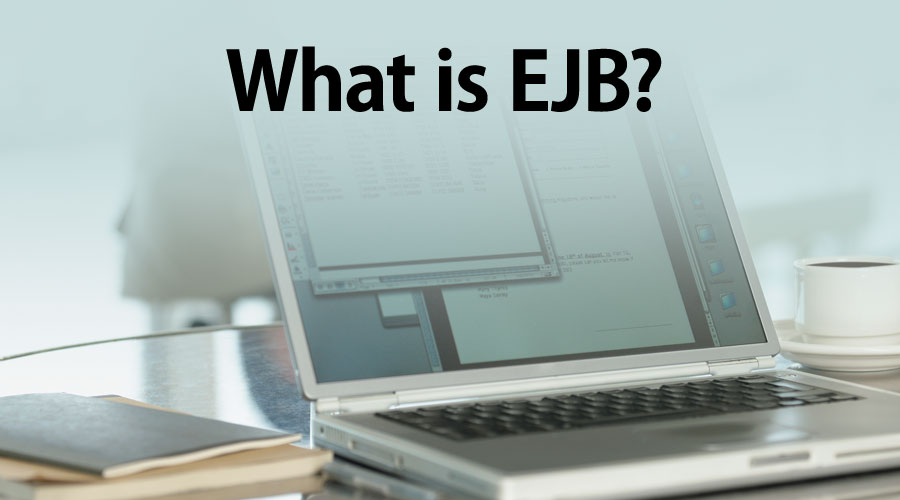Updated May 18, 2023

Introduction to EJB
Enterprise Java Beans or EJB is a Java API used to construct enterprise software that comprises client-side applications. Many applications utilize it due to its different logic and transactions for pooling beans. Different types are session beans, entity beans, and message-driven beans. This can also be used on the server side and is independent of the platform. Large application development is easily simplified using this, and it provides system-level services for any application. It works in an enterprise environment and is a Java-specified framework.
Understanding of EJB
To understand, it is essential to know how applications use EJBs. Developers can utilize Enterprise JavaBeans (EJB) beans for various purposes, including handling sessions and managing entities. A session bean instance serves one client at a time. The session beans can be of two types. They are stateful and stateless. A stateless session does not need to store any session or client information. It may or may not contain states specific to a client. A stateless session can store a state for the duration of method invocation. When a method completes, then this issue is not retained. A stateful session maintains all information that reflects the interaction between the bean and client across methods and transactions. It can manage interactions between clients and different enterprise beans. It also has an entity representing persistent data usually stored in the database.
How does EJB make Working so Easy?
EJB does simplify the process of development of an entity and session beans. This is possible because of its simplified model and leveraging well-known artifacts like POJOs and the different interfaces. It also has a new EntityManager API, which changes business methods and does not require any specifications. All these features also make maintaining it easier.
What can you do with EJB?
The Enterprise JavaBeans are Java classes with annotations that help create business logic for different applications. With this, it also provides additional advantages of the below services, which EJB provides.
Advantages
These advantages are:
- Clustering: By this, you can deploy it on any clustering environment.
- Concurrency: All EJBs are instantiated through a different pool of objects.
- Connection Pool to database: All the pools created can be accessed by EJBs.
- Security: JAAS is used for the security of all EJBs.
- Scheduling: It has a timer service that enables the user to implement tasks and further execute them.
Working with EJB
EJB has different containers which help in the easy development of applications. First, the application server invokes servlets and Java Server Pages. The other half is how EJBs locate and work with the protocol, which helps access these. To call an EJB, it should be connected to a naming service of a remote application server. This naming server runs different objects on the server. Then the EJB is called, which helps secure the EJBs to the naming service. Developers must handle how EJB can call its methods and work with them. It can add information to a message queue and then save the data to a database.
Advantages
Listing a few advantages below:
- EJBs have remote access capabilities that enable data clustering, ensuring scalability.
- It allows the usage of attributes which makes annotation-based programming easier.
- They can cache and pool the data whenever necessary, and the current containers assist in managing EJB cycles.
- It provides free security.
- It supports object-oriented concepts which make inheritance possible.
- It also provides declarative transactions.
Required Skills
To use EJB, the skills needed include the programmer knowing Java. With Java, it is an additional advantage for the programmer if they know servlets, J2EE, and Oracle SQL architecture. It would make it easier to learn and understand things in EJB properly.
Why Should We Use EJB?
It should be used as it has many advantages. It provides services like clustering, concurrency, running transactions through JTA, security, and schedule services. With all these handy tools, you can easily create applications to design and implement business logic.
Scope
After C++, JAVA was the next big thing after C++ in the IT industry. Java created many opportunities in IT. With the advent of Java came many other technologies, which include EJB. It has a great scope in the market as it helps create applications easily and quickly. It will stay in the market with the features of containers, entities, and sessions.
Why do we Need EJB?
Java being the talk of the town ever since its inception, Java developers are clamoring about EJB. It brings many services which highlight it. The serialized and deserialized format facilitates easy communication between a client and server due to its distributed nature.
How will this Technology help you in Career Growth?
Learning EJB will give you a cutting edge in your career. EJB being fast and reliable, is famous in the market, and if you are a Java professional, you can quickly learn EJB and start working on it. EJB will help you learn about client-server architecture and help you in getting to know about containers.
Who is the Right Audience for Learning this Technology?
The people who know Java, J2EE, and servlets should opt for learning EJB. It simplifies the process of creating various applications.
Conclusion
Enterprise JavaBean is a bean that helps in creating stateful and stateless sessions. The data may or may not be stored in the database. It also provides entities and containers, which help in fast performance. As a result, it is software that allows you to understand Java well and makes it easier to create applications.
Recommended Articles
This has been a guide to What is EJB? Here we discussed the basic concept, required skills, career growth, and advantages of EJB. You can also go through our other suggested articles to learn more –

